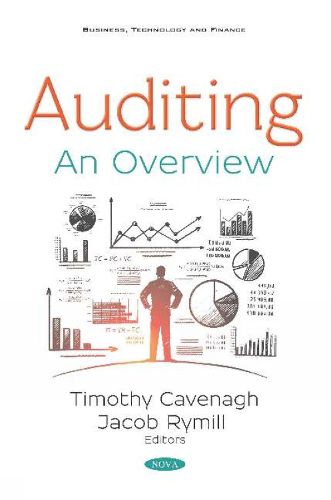Readings Newsletter
Become a Readings Member to make your shopping experience even easier.
Sign in or sign up for free!
You’re not far away from qualifying for FREE standard shipping within Australia
You’ve qualified for FREE standard shipping within Australia
The cart is loading…






In this compilation, critical aspects of the internal audit function are contrasted in order to provide an insight into the value of internal auditing and, within that, to submit arguments for the implementation and maintenance of an internal audit function.The authors examine how to optimize the allocation of audit resources over an auditee population with respect to available population statistics. The included survey mainly deals with audit situations where the auditee is assumed to behave rationally and optimize its expected utility based on information regarding the audit strategy. According to the International Standards for the Professional Practice of Internal Auditing, internal auditors must always maintain an objective and independent working attitude to perform effectively. However, data indicate that this requirement might often become challenged due to bias-prone situations, eventually leading to false conclusions or even wrong decisions by auditors and management. As such, the authors address selected cognitive biases for internal auditors and potential behavior patterns tempering the effects of these biases.In common energy audition methods, the efficiency of waste-to-energy power plants is evaluated directly. This method is highly sensitive to the measurement errors of waste mass flow which is difficult determine precisely. Further-more, the direct method does not clarify the sources of energy loss. Using the indirect method which is proposed in this chapter book, the power plant is split into three sub-systems. The overall efficiency is determined by analyzing the multiplication of thesesub-systems efficiency and the internal energy usage.This final chapter uses case examples to showcase how auditing is a suitable method for clarifying the level of comprehensive, risk-based safety and security management of organizations operating in business and the public sector. The authors encourage organisations to develop their safety and security management system using a risk-based approach.
$9.00 standard shipping within Australia
FREE standard shipping within Australia for orders over $100.00
Express & International shipping calculated at checkout
In this compilation, critical aspects of the internal audit function are contrasted in order to provide an insight into the value of internal auditing and, within that, to submit arguments for the implementation and maintenance of an internal audit function.The authors examine how to optimize the allocation of audit resources over an auditee population with respect to available population statistics. The included survey mainly deals with audit situations where the auditee is assumed to behave rationally and optimize its expected utility based on information regarding the audit strategy. According to the International Standards for the Professional Practice of Internal Auditing, internal auditors must always maintain an objective and independent working attitude to perform effectively. However, data indicate that this requirement might often become challenged due to bias-prone situations, eventually leading to false conclusions or even wrong decisions by auditors and management. As such, the authors address selected cognitive biases for internal auditors and potential behavior patterns tempering the effects of these biases.In common energy audition methods, the efficiency of waste-to-energy power plants is evaluated directly. This method is highly sensitive to the measurement errors of waste mass flow which is difficult determine precisely. Further-more, the direct method does not clarify the sources of energy loss. Using the indirect method which is proposed in this chapter book, the power plant is split into three sub-systems. The overall efficiency is determined by analyzing the multiplication of thesesub-systems efficiency and the internal energy usage.This final chapter uses case examples to showcase how auditing is a suitable method for clarifying the level of comprehensive, risk-based safety and security management of organizations operating in business and the public sector. The authors encourage organisations to develop their safety and security management system using a risk-based approach.